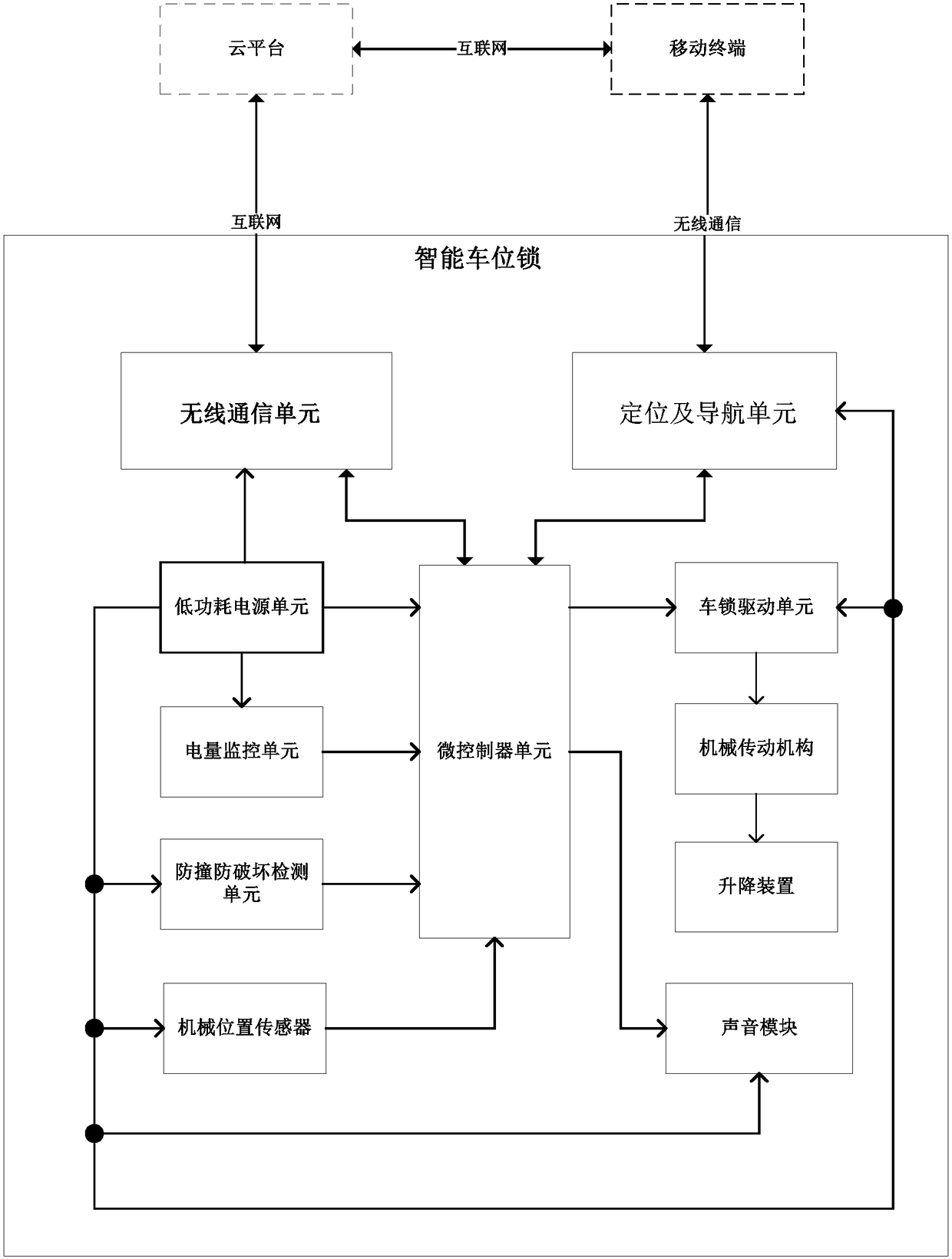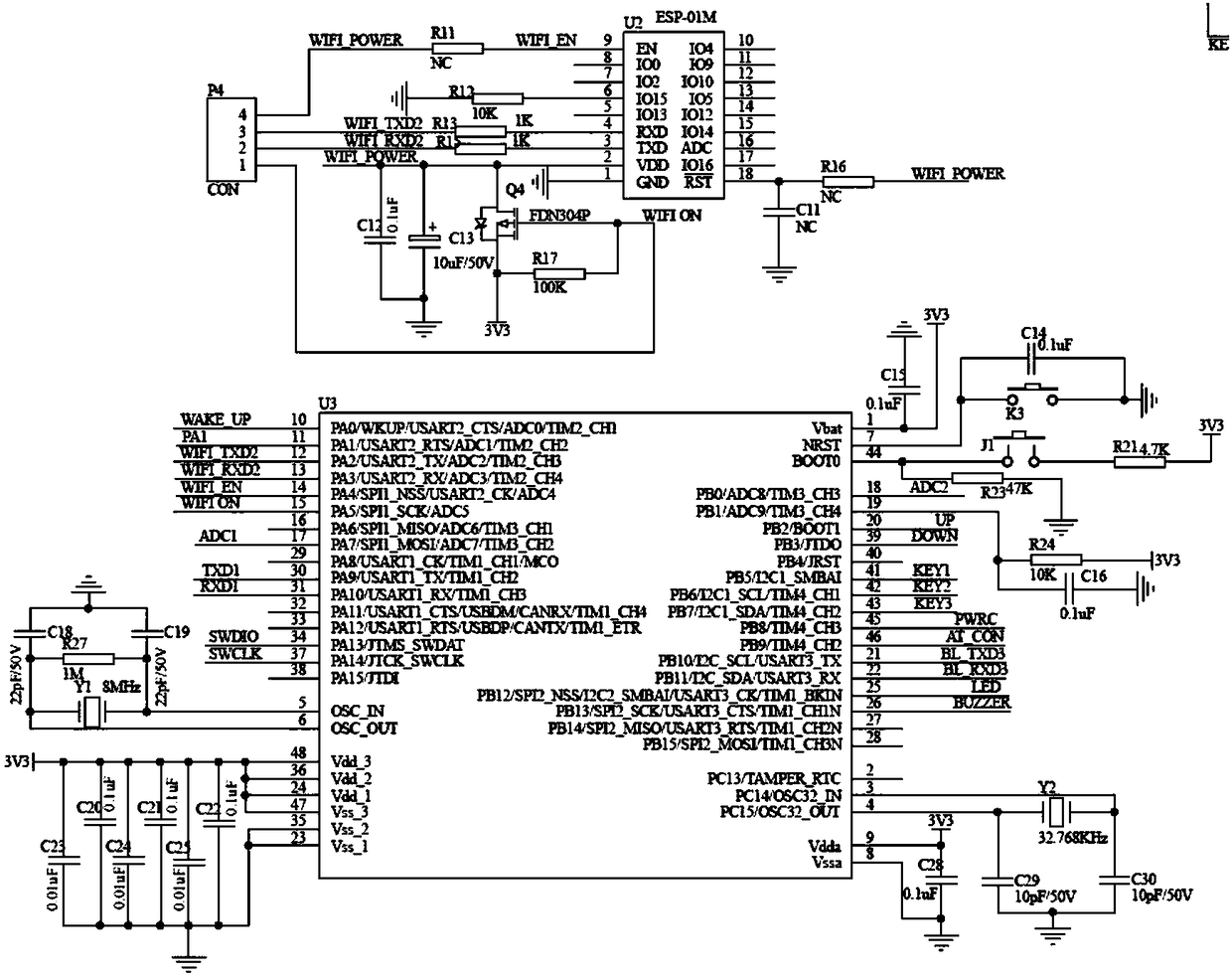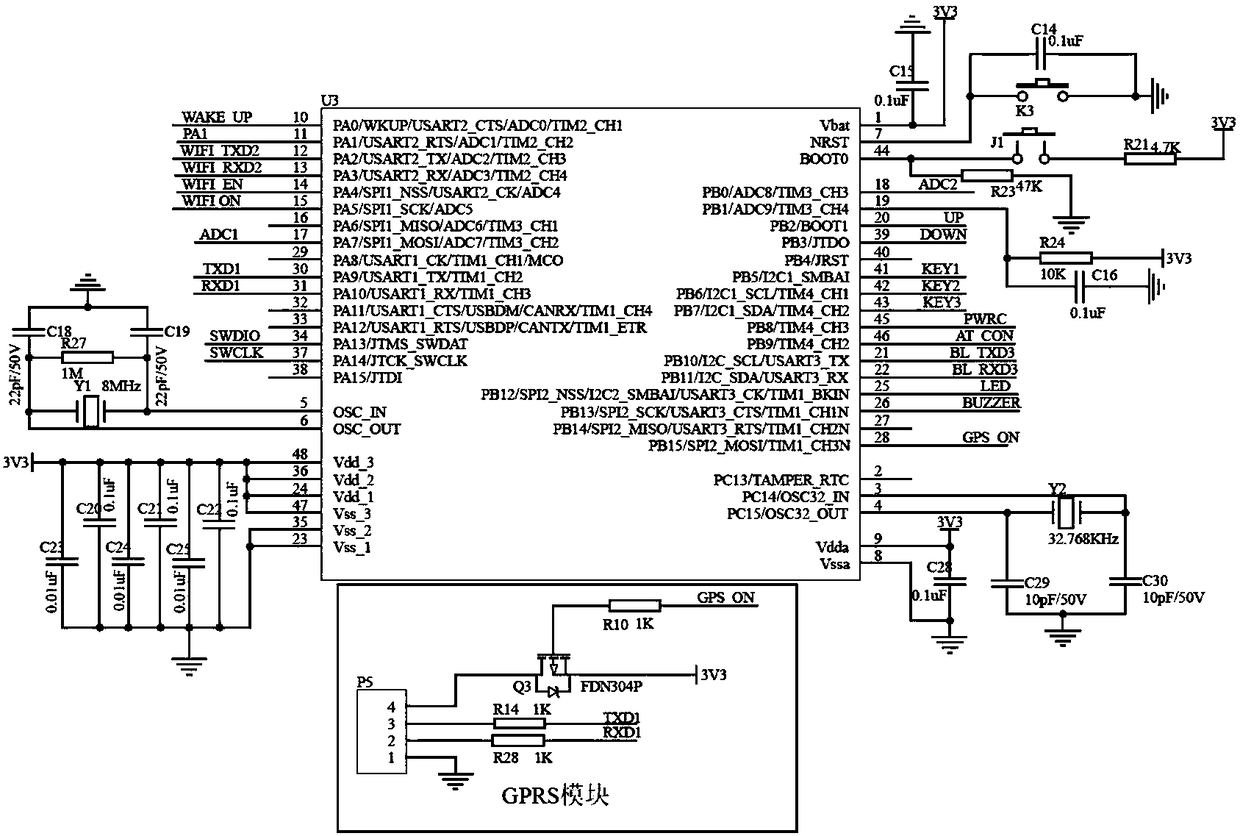Parking management system and parking space management method
一种停车管理、车位的技术,应用在停车管理系统及车位管理领域,能够解决使用者开关车位锁、不能够做到防微杜渐、延长场内车位占用时间和不受控时间等问题
- Summary
- Abstract
- Description
- Claims
- Application Information
AI Technical Summary
Problems solved by technology
Method used
Image
Examples
Embodiment Construction
[0151] Below in conjunction with accompanying drawing, the present invention will be further described: the present invention is equipped with intelligent parking lock, cloud platform, management unit and mobile terminal.
[0152] A smart parking lock is a parking lock based on the Internet or a local area network. It can receive control commands from the cloud platform and unlock or close the lock according to the received command signals. At the same time, the parking lock can also send various status information to the cloud in real time. The platform realizes the sharing of parking space locks and open and intelligent management and monitoring; it is also a technology that includes Bluetooth positioning and multiple global satellite positioning, and can be combined with mobile APP or WeChat official account to realize parking space sharing, reservation, navigation and parking. A parking lock control system for finding a car with one key; it is also an inductive parking lock...
PUM
 Login to View More
Login to View More Abstract
Description
Claims
Application Information
 Login to View More
Login to View More - R&D
- Intellectual Property
- Life Sciences
- Materials
- Tech Scout
- Unparalleled Data Quality
- Higher Quality Content
- 60% Fewer Hallucinations
Browse by: Latest US Patents, China's latest patents, Technical Efficacy Thesaurus, Application Domain, Technology Topic, Popular Technical Reports.
© 2025 PatSnap. All rights reserved.Legal|Privacy policy|Modern Slavery Act Transparency Statement|Sitemap|About US| Contact US: help@patsnap.com



